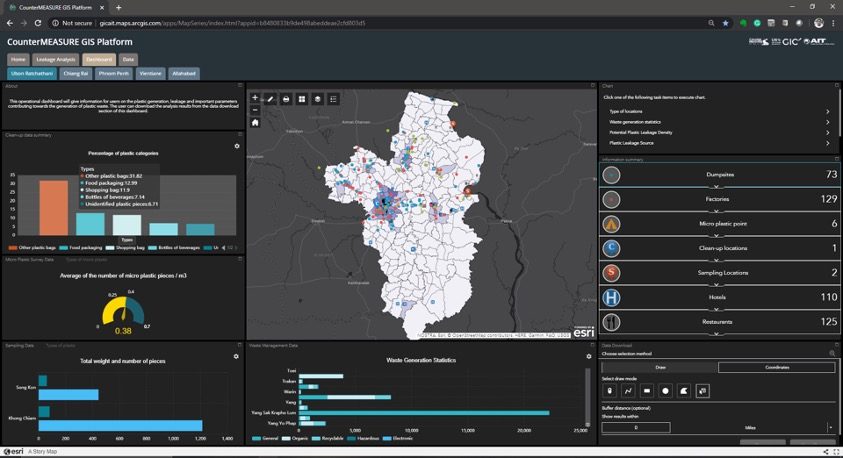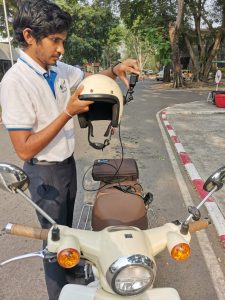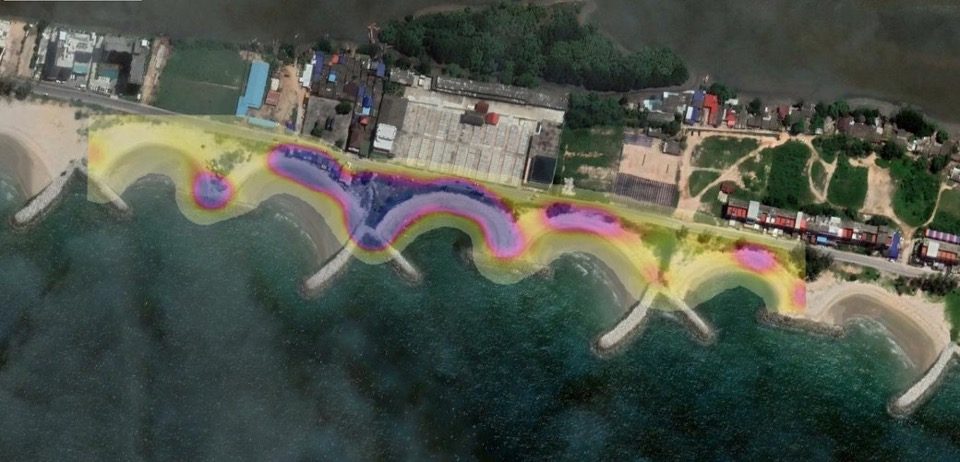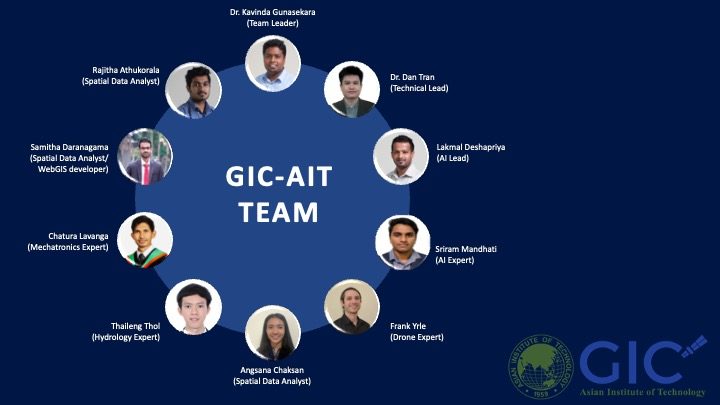By Office of Public Affairs
Bangkok, 20 April 2021 – The UN Environment Programme (UNEP) announced that it is working to fight plastic pollution using citizen science and machine learning, with technical advisory support from Google. With Google’s support, UNEP will create a new machine learning model that reveals a more detailed and accurate view of plastic pollution in the Mekong River.
One of the main challenges of fighting plastic pollution is determining how exactly it enters – or “leaks” – into bodies of water. Working in the Mekong region from 2019-2020, UNEP’s CounterMEASURE project, with the support of the Geoinformatics Center (GIC) at the Asian Institute of Technology, developed techniques of assessing plastic leakage into the Mekong River using geospatial data and images of plastic waste supplied by researchers and volunteers.

GIS Platform of UNEP CounterMEASURE Project P-I (https://platform.countermeasure.asia/)

Hunting for plastics on a scooter
The new machine learning model developed by UNEP, Google and GIC will add to these efforts, creating a tool that can generate a much more detailed & accurate view of the plastic pollution problem in the Mekong and rivers beyond. Citizen science will strengthen the algorithm through community-sourced, annotated images. This machine learning model will contribute to the development of a plastic leakage hotspot map. The map can then be used by local and national governments to determine how to target policies and resources to prevent plastic leaking into waterways.
The collaboration will also contribute to the Global Partnership on Marine Litter.
“The plastic pollution problem demands creative solutions,” said Dechen Tsering, UNEP Regional Director and Representative for Asia and the Pacific. “The CounterMEASURE project has already deployed an array of modern technologies to help map plastic pollution in rivers. With Google’s support, we are able to improve the detail and accuracy of this work, which will help UNEP develop guidance for local and national governments to effectively tackle plastic pollution in rivers. We are excited that this partnership can also help expand the CounterMEASURE approach beyond the Mekong and Ganges.”

Plastic hotspots on Rayong beach, Thailand
“The plastic pollution crisis needs high quality, scalable solutions that can be used in areas that run the highest risk of leaking plastics into our oceans. Technology is critical to enabling these solutions,” said Emmanuel Sauquet, VP, Google, Inc. “We are excited to support UNEP in creating this open source machine learning model that will help detect plastic pollution in streets and river banks. UNEP's influence with local governments will allow effective action to be taken to stop plastic leakage, and scale this solution globally.”
Estimates show that rivers transport millions of tons of plastic into the oceans every year. Some 95% of that discharge comes from only 10 rivers, 8 of which are in Asia. Amongst those 8 are the Mekong and the Ganges rivers, the lifeblood for hundreds of millions of people in South-East Asia and India. However, scientific knowledge on leakage of plastic litter into rivers and effective countermeasures remains insufficient to tackle the problem properly.

GIC-AIT Team
About CounterMEASURE
The Japan-funded CounterMEASURE project works to identify sources and pathways of plastic pollution in river systems in Asia, particularly the Mekong and the Ganges. The project has developed plastic leakage models for localities in 6 different countries using an innovative and replicable approach. Deploying technologies like GIS, machine learning and drones has allowed the CounterMEASURE team to augment ground-level research in an efficient and scalable way. This scientific knowledge can then be used to inform policy decisions and actions to beat plastic pollution and ensure rivers are free of plastic waste.

